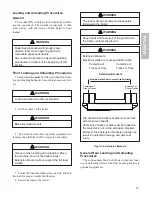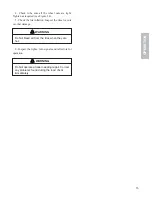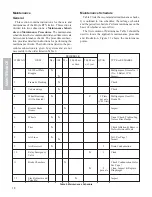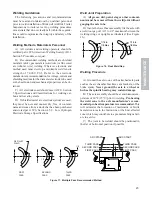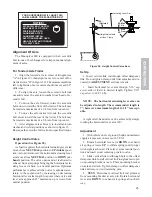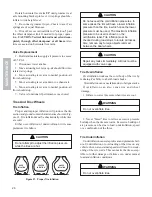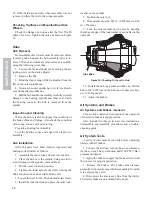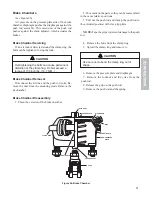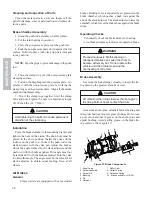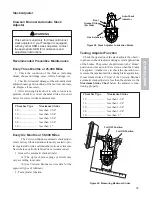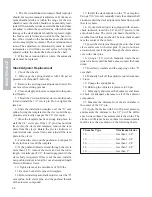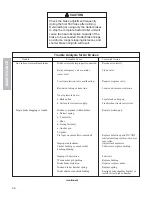
26
MAINTENANCE
Rotate horizontal lever arm UP until grommet is at
axle mounting bracket pin level. Air springs should re-
inflate to ride height level.
5. Re-connect grommet to pin, Check to see if air
springs are of equal firmness.
6. Trim off excess vertical link rod "stick-out" past
the offset dampener link if needed for proper opera-
tion. CAUTION: Vertical link rod must extend com-
pletely through offset dampener at all times. Also
trim excess rod on horizontal lever arm.
Valve Replacement
1. Build and maintain supply air pressure in excess
of 65 P.S.I.
2. Disconnect lower anchor.
3. Move actuating lever arm up-air should flow into
related air springs.
4. Move actuating lever arm to neutral position-air
flow should stop.
5. Move actuating lever arm down to exhaust air.
6. Move actuating lever arm to neutral position-air
flow should stop.
7. Valve is functional if performance is as noted.
Tires And Disc Wheels
Tire Inflation
Proper and improper inflation will produce the tire
section and ground contact characteristics shown in Fig-
ure 21. Tire inflation must be checked daily while tires
are cold.
Either over-inflation or under-inflation will cause
premature tire failure
CAUTION
Do not attempt to adjust the inflation pressure
while the tires are hot.
Figure 21. Proper Tire Inflation
CAUTION
Do not exceed the cold inflation pressures. In
some cases the rim will have a lower inflation
pressure than the tire, in which case the lower
pressure must be used. The maximum inflation
pressure to be used is shown on the
certification label. Tire inflation must be
checked during road stops to locate air losses.
Also, remove any foreign objects jammed
between the dual wheels.
CAUTION
Repair any leaks immediately. All tires must be
equipped with valve caps.
Tire Overinflation
Overinflation weakens the cord body of the tire by
reducing it's ability to absorb road shocks.
Overinflation can cause failure due to fatigue cracks.
Overinflation can also cause rim and wheel
damage.
1. Inflate to correct pressure when tires are cool.
WARNING
Do not overinflate tires.
2. Never "bleed" tires to relieve excessive pressure
buildup when the tires are warm. Excessive buildup of
air pressure can be due to load, underinflation, speed
or a combination of the three.
Tire Underinflation
Underinflation causes rapid wear and premature fail-
ure. Underinflation or overloading of the tires on any
vehicle driven at sustained speeds will result in weak-
ening of the tire cords. This can make the tire suscep-
tible to further damage or failure even under normal
load and inflation conditions.
WARNING
Do not overinflate tires.
OVER
INFLATION
PROPER
INFLATION
UNDER
INFLATION


